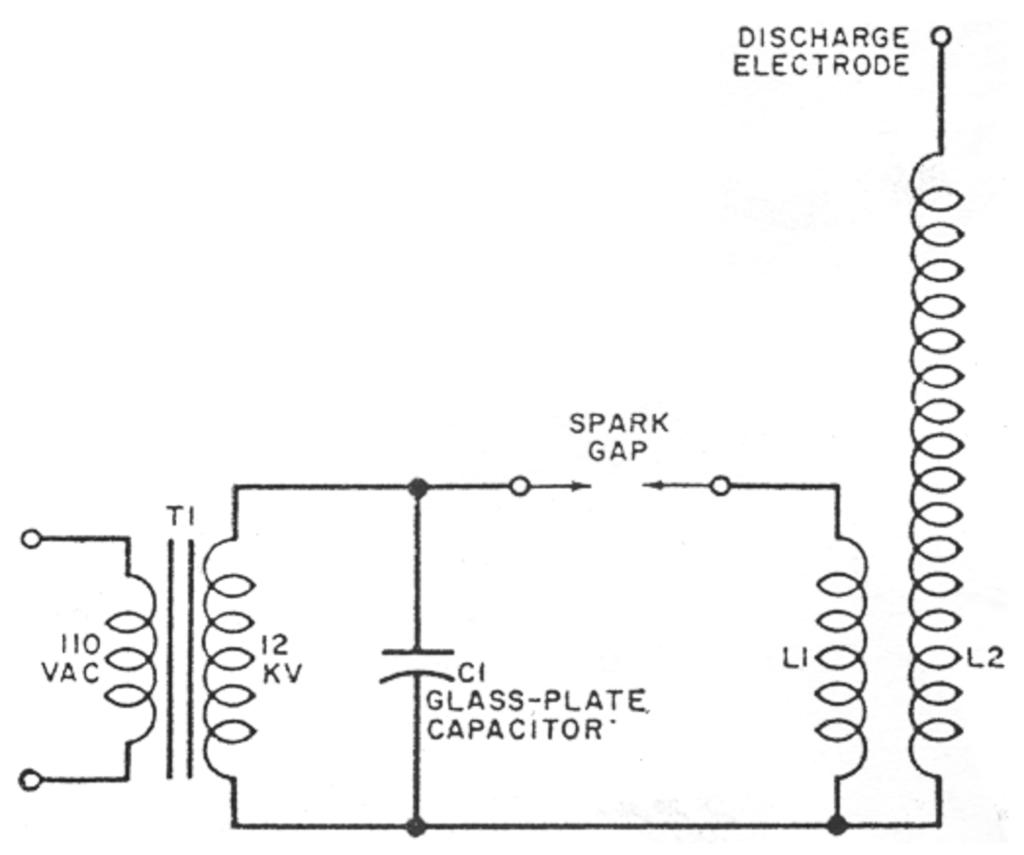TCBA Volume 7 - Issue 1
Page 6 of 18
Input - Output
Q. The FRANKENSTEIN article impressed so much that I went out and purchased the MCA video of the 1931 Universal production. Was there a Tesla coil used in the high voltage scene?
A. Yes, but you have to be alert to see it. Direct your attention to the lower left-hand corner of the screen as the Monster is being hoisted to the laboratory roof. You'll see one of Ken Strickfaden's conical coils giving out with the sparks.
Q. I'm one of those to whom you referred as growing up with the Monsters and horror comics. My favorite Frankenstein movies were the Abbott & Costello spoof and the Mel Brooks production.
A. The films ABBOTT & COSTELLO MEET FRANKENSTEIN and YOUNG FRANKENSTEIN were much better than the supposedly more serious copycat films. The former were intended to be satirical productions and made no pretensions about being anything else. That's more than I can say about most of the sleazy “B” movies on the subject.
Q. I recently visited Omni Publications in Hawthorne (CA) to look over their Tesla publications. I saw a number of books which I believe are strongly anti-semitic. I feel that Tesla should not be associated with this kind of influence.
A. I am aware of their bigoted literature and there is nothing we can do about it except to avoid buying any of their publications. Unfortunately, there are plenty of sickies in this country to keep them going.
Q. I constructed the “Big TC” project that appeared in the July, 1964 issue of POPULAR ELECTRONICS. The most I can get out of it is a puny 6" spark. I've enclosed a copy of the article and wonder if you can suggest how I might get a longer spark without rebuilding from scratch?
A. BIG TC should be capable of a 30-40" spark. I suggest that you replace the primary coil, spark gap, and increase the size of the primary capacitor. The secondary terminal could use a larger ball or toroid. However, before commencing the changes, you might check some of the back issues of TCBA NEWS for information on circuits, gaps, primary coils, and so on. The circuit given in the article is shown at right. It is not only incorrect but DANGEROUS!
Q. Have there ever been any experiments conducted in which a pair of precisely built Tesla coils would have their outputs tuned to generate a beat frequency? Or, in which one member of a tuned pair was phase shifted? Would some peculiar effects be noticed? Could such an arrangement possibly be capable of ball lightning?
A. Beat frequency, phase shift, ball lightning? I imagine that any or everything you mentioned above is possible. It seems to me that spark generated oscillators produce so broad a band of frequencies that phasing might be difficult. One theory has it that Tesla produced ball lightning by rapid shifting of the fundamental frequency of his coil. If that is true, then your inquiry is not far off base. Maybe one of our more knowledgeable readers will comment on your inquiry.
Q. I tried raising the secondary 4" above the primary as suggested in Volume 6, #4, and got no output at all.
A. I assume that you had a working coil before starting the experiment. (1)If your initial coefficient of coupling was loose, then making it looser will cause a drop in output voltage. (2)Another factor that will have an effect on the results is the shape of the field. Raising the secondary above a rising spiral primary (helix) will give a different result from a primary made in the form of an Archimedian spiral (pancake). (2)Power input must also be taken into consideration.
Q. Assuming all other variables are held fixed, what effect, if any, does operating frequency have on the secondary discharge such as length, shape, density, color, skin effect, etc.?
A. Spark discharges from spark energized oscillators of different frequencies show somewhat similar characteristics. Spark length and charge density is more a matter of power input rather than frequency. The lower frequencies tend to be more spectacular but this may be due to the fact that higher input powers are used. Vacuum tube TC discharges take on an entirely different (nonlightning bolt) look due to both the higher frequency and wave form producing the spark. Color is generally pinkish as compared to the blue-white arc from a spark gap oscillator. I would assume that the skin effect is more pronounced with the higher frequencies.

